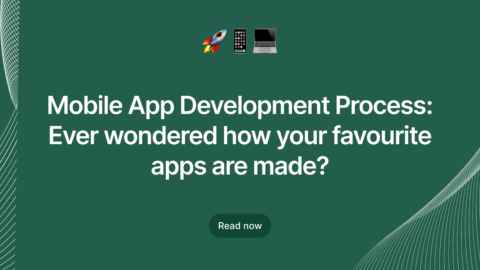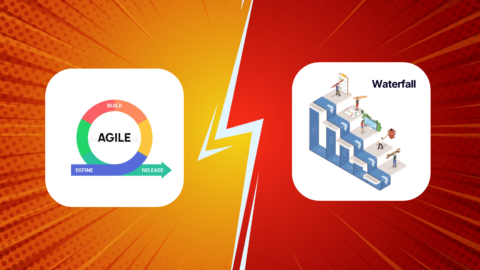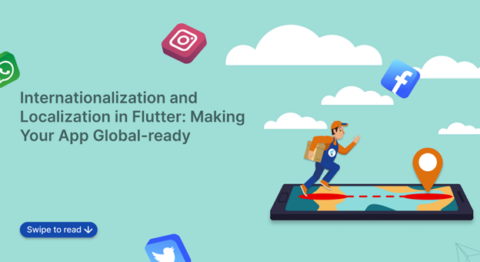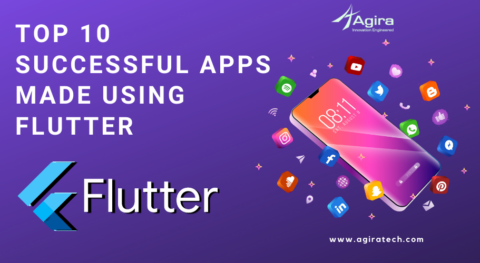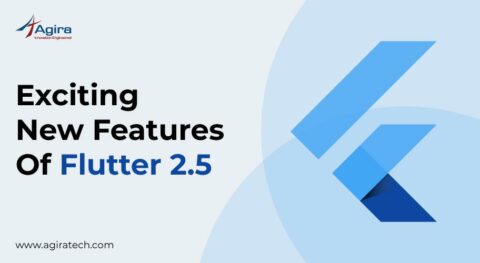Just have a look below!
Source: Click here
Have you noticed the numbers? You got it! Frameworks are becoming super popular because they make our lives a breeze! They are like our secret weapons in the fast-growing development field. They come loaded with ready-made goodies like components, libraries, and tools that save us a ton of time and effort. No more starting from scratch! They bring order to the madness with their set patterns and rules, making teamwork smoother and our code cleaner. And hey, they’ve got awesome communities too! We get all the support, resources, and updates we need. It’s no surprise that frameworks are the go-to choice for us developers. They’re total game-changers!
As mentioned in the image, there are 90 plus web application frameworks are existing in the recent world. Now, we’re going to focus on Flutter, an open-source UI software development kit (SDK), and its integration with GraphQL.
Flutter is a popular choice among web developers, while GraphQL is a cutting-edge query language and runtime for APIs. Together, we’ll explore how these two technologies can enhance efficiency and functionality. Join us on this insightful journey as we delve into the seamless integration of Flutter and GraphQL.
The growing importance of Flutter as a framework.
“Flutter is the most popular cross-platform mobile framework used by global developers, according to a 2022 developer survey. Based on the survey, 46 percent of software developers used Flutter.” – statista.com
Flutter has witnessed a remarkable surge in importance as a framework in recent years. Its cross-platform development capabilities, coupled with native-like performance, have made it a preferred choice for developers and businesses.
With Flutter, developers can build high-performance applications for both Android and iOS platforms using a single codebase, reducing development time and effort.
The framework’s hot reload feature enables rapid iteration and experimentation, boosting developer productivity.
Flutter’s rich set of customizable UI widgets empowers developers to create visually stunning and engaging user interfaces. Furthermore, its open-source nature has fostered a vibrant community, resulting in an extensive library of plugins and resources.
As Flutter continues to gain widespread adoption across industries and receive support from major players, it solidifies its position as a leading framework for building cross-platform applications.
FYI: The top five territories for Flutter are China, the United States, the EU, Brazil, and India.
A glimpse of what GraphQL is all about
Let’s take a quick peek into the world of GraphQL. Imagine you’re a powerful wizard and you need to fetch information from different sources. Instead of casting multiple spells (requests) to each source, GraphQL acts as your magical conduit. It allows you to craft a single enchanting incantation (query) that fetches exactly what you need from multiple realms (APIs or databases) in one go. It’s like wielding a wand that elegantly retrieves the precise data you desire, saving you time and effort. With GraphQL, you become the master of your data-fetching destiny!
Did you Know? Facebook, Shopify, Instagram, Twitter, Tokopedia, The New York Times, StackShare, and KAVAK are the popular companies that reportedly use GraphQL in their tech stacks – StackShare reviews
Is it worth integrating Graphql in Flutter apps?
Absolutely! Integrating GraphQL into your Flutter apps is a fantastic decision that adds a touch of brilliance to your development journey. With GraphQL, you unlock the power of efficient data fetching, retrieving precisely what you need while banishing the burden of excessive or insufficient data. The flexibility it provides in tailoring queries to your UI components is akin to wielding a magical artifact, empowering you to craft dynamic and responsive experiences. Moreover, GraphQL’s seamless API evolution ensures smooth sailing through app updates without disrupting existing clients. Supported by a thriving ecosystem of GraphQL tools and packages for Flutter, you’ll have a fellowship of talented wizards guiding you on this enchanting quest.
How to integrate GraphQL in your Flutter apps and prepare to witness the unfolding of pure magic!
To weave the magic of GraphQL into your Flutter apps, embark on a journey with these enchanting steps:
- Summon Dependencies: Open your Flutter project’s pubspec.yaml and invite the graphql_flutter package as a dependency. This mystical package provides the client implementation for GraphQL in Flutter, granting you access to its powers.
- Forge a GraphQL Client: Create an instance of the GraphQLClient class from graphql_flutter. This client becomes your conduit to the GraphQL server. Bestow upon it the URL of your GraphQL endpoint and any other necessary configurations.
- Craft GraphQL Operations: Unleash your creativity by crafting GraphQL queries, mutations, or subscriptions using the captivating GraphQL syntax. You can write these operations as strings or employ dedicated GraphQL query builder libraries like graphql or gql to bring them to life.
- Execute the Spellbinding Operations: Utilize the spellbinding query or mutate methods offered by the GraphQLClient to execute your GraphQL operations. These methods take your crafted operations as input and conjure a QueryResult or MutationResult object as a result.
- Embrace the Responses: Dive into the mystical realm of the QueryResult or MutationResult object to extract the treasures it holds. Let your app’s logic interpret the data, anticipate errors, and grace your UI with its enchanting presence.
- Enchant the UI: Use the acquired GraphQL data to breathe life into your Flutter app’s UI components. Leverage Flutter’s powerful reactive UI capabilities and bind the data with state management solutions like Provider, Riverpod, or GetX, ensuring your UI remains in sync with the ever-changing world of GraphQL.
Remember!
These steps provide you with a magical overview of integrating GraphQL into Flutter apps. The specific implementation may vary based on the GraphQL client library and the state management approach you choose. Venture forth, consult the mystical documentation and examples provided by your chosen GraphQL client library, and let the magic unfold!
An overlook of some of the use cases where a Flutter app integrated with GraphQL can be employed
A Flutter app infused with the power of GraphQL can transcend boundaries and find its place in a multitude of realms:
Source: Click here
Mobile Magic: Unleash its potential in diverse domains like e-commerce, social media, travel, finance, healthcare, and beyond. With GraphQL’s efficiency and flexible querying, users can revel in real-time, personalized experiences through Flutter-powered mobile apps.
Spellbinding SPAs: Harness the fusion of Flutter and GraphQL to conjure captivating Single Page Applications. Empower your web applications with dynamic, interactive interfaces, where Flutter’s cross-platform prowess and GraphQL’s tailored data retrieval weave an enchanting experience.
Enterprise Enchantment: Forge powerful applications for the realm of enterprises. Navigate the complexities of data structures and multiple sources with Flutter’s UI prowess, while GraphQL’s efficient data fetching unleashes possibilities for data visualization, inventory management, CRM, and more.
IoT Sorcery: Control and communicate with IoT devices using Flutter and GraphQL’s mystical bond. Explore the realms of real-time monitoring, seamless control, and data analysis as GraphQL effortlessly communicates between your Flutter app and IoT devices.
Cross-Platform Mastery: Flutter’s cross-platform nature merges harmoniously with GraphQL, empowering developers to craft mesmerizing applications for iOS, Android, and the web. Efficient code sharing, simplified maintenance, and reduced development time weave a spell of enchantment.
In every scenario, integrating Flutter with GraphQL brings forth a realm of possibilities, where seamless data retrieval, flexible querying, and magical user experiences converge. Unleash the power of Flutter and GraphQL, and let your imagination soar!
FYI: Analyzing Overall Usage Statistics
The report found 47.9% of developers use GraphQL for exposing an API intended for a personal website or app, 40.4% use it for private unexposed APIs for internal usage, and 19.5% use GraphQL for publicly available APIs intended for third-party developer consumption. – devops.com
Final Thoughts
By integrating GraphQL APIs into your Flutter app, you open doors to a realm of efficiency, flexibility, and dynamic experiences. In this blog post, we’ve guided you through the magical journey of combining Flutter and GraphQL, empowering you to build powerful and responsive applications. Embrace the symbiotic relationship between Flutter and GraphQL, and witness your app development reach new heights of enchantment.
Seeking magical Flutter apps integrated with GraphQL? Look no further! Agira has a legion of tech wizards ready to bring your app dreams to life. Book your tickets now for Agira’s captivating innovation and technology magic show!





